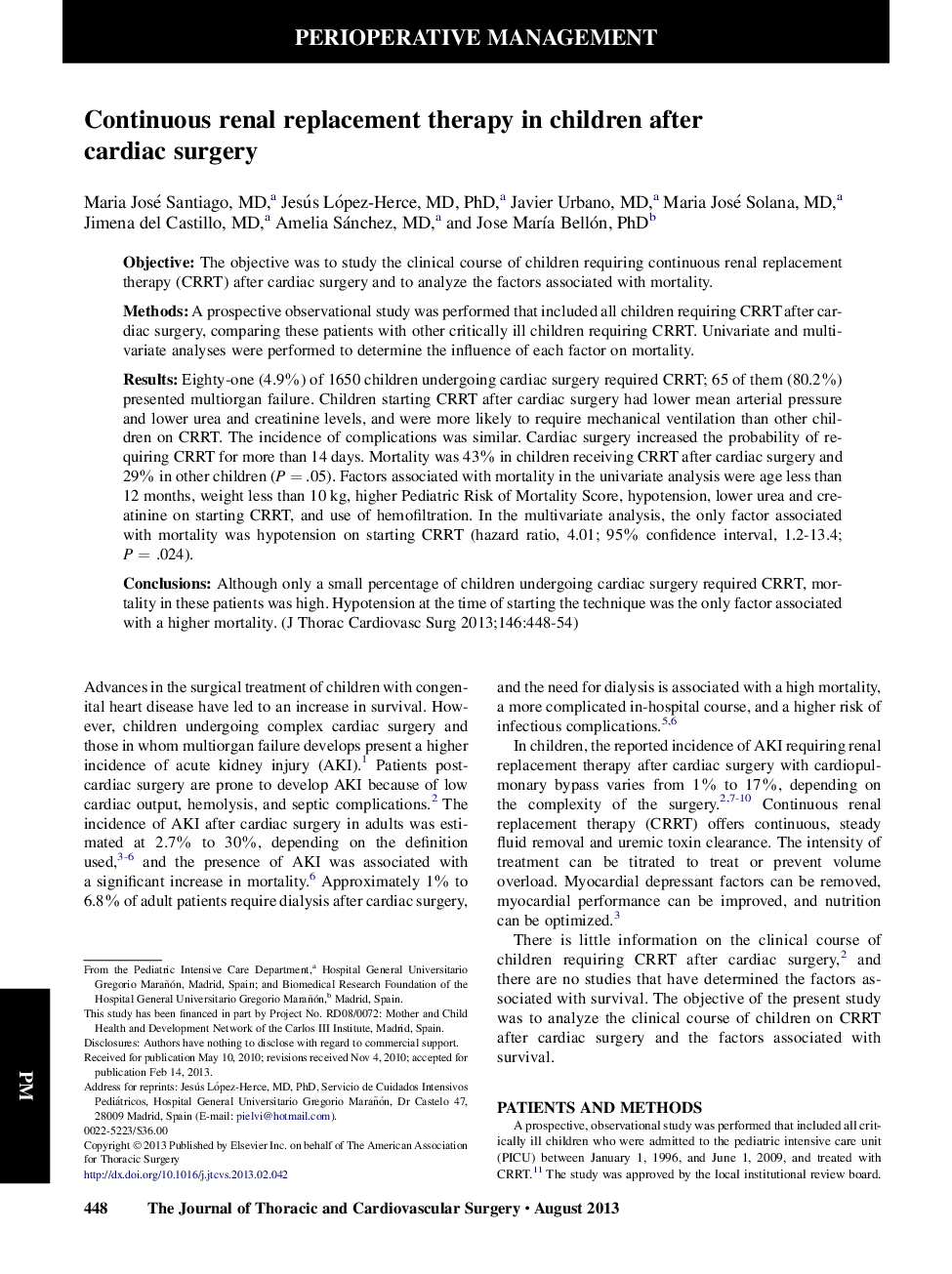| Article ID | Journal | Published Year | Pages | File Type |
|---|---|---|---|---|
| 2980933 | The Journal of Thoracic and Cardiovascular Surgery | 2013 | 7 Pages |
ObjectiveThe objective was to study the clinical course of children requiring continuous renal replacement therapy (CRRT) after cardiac surgery and to analyze the factors associated with mortality.MethodsA prospective observational study was performed that included all children requiring CRRT after cardiac surgery, comparing these patients with other critically ill children requiring CRRT. Univariate and multivariate analyses were performed to determine the influence of each factor on mortality.ResultsEighty-one (4.9%) of 1650 children undergoing cardiac surgery required CRRT; 65 of them (80.2%) presented multiorgan failure. Children starting CRRT after cardiac surgery had lower mean arterial pressure and lower urea and creatinine levels, and were more likely to require mechanical ventilation than other children on CRRT. The incidence of complications was similar. Cardiac surgery increased the probability of requiring CRRT for more than 14 days. Mortality was 43% in children receiving CRRT after cardiac surgery and 29% in other children (P = .05). Factors associated with mortality in the univariate analysis were age less than 12 months, weight less than 10 kg, higher Pediatric Risk of Mortality Score, hypotension, lower urea and creatinine on starting CRRT, and use of hemofiltration. In the multivariate analysis, the only factor associated with mortality was hypotension on starting CRRT (hazard ratio, 4.01; 95% confidence interval, 1.2-13.4; P = .024).ConclusionsAlthough only a small percentage of children undergoing cardiac surgery required CRRT, mortality in these patients was high. Hypotension at the time of starting the technique was the only factor associated with a higher mortality.
